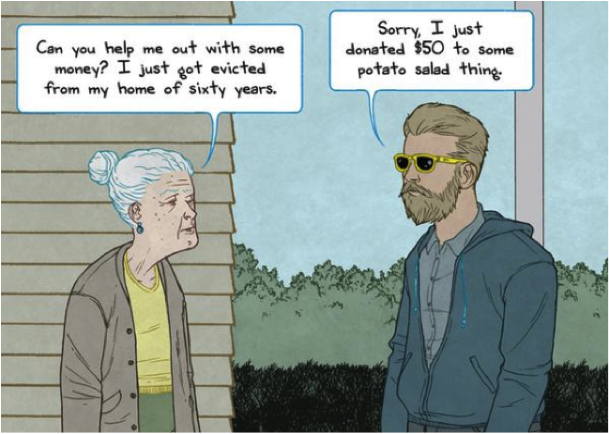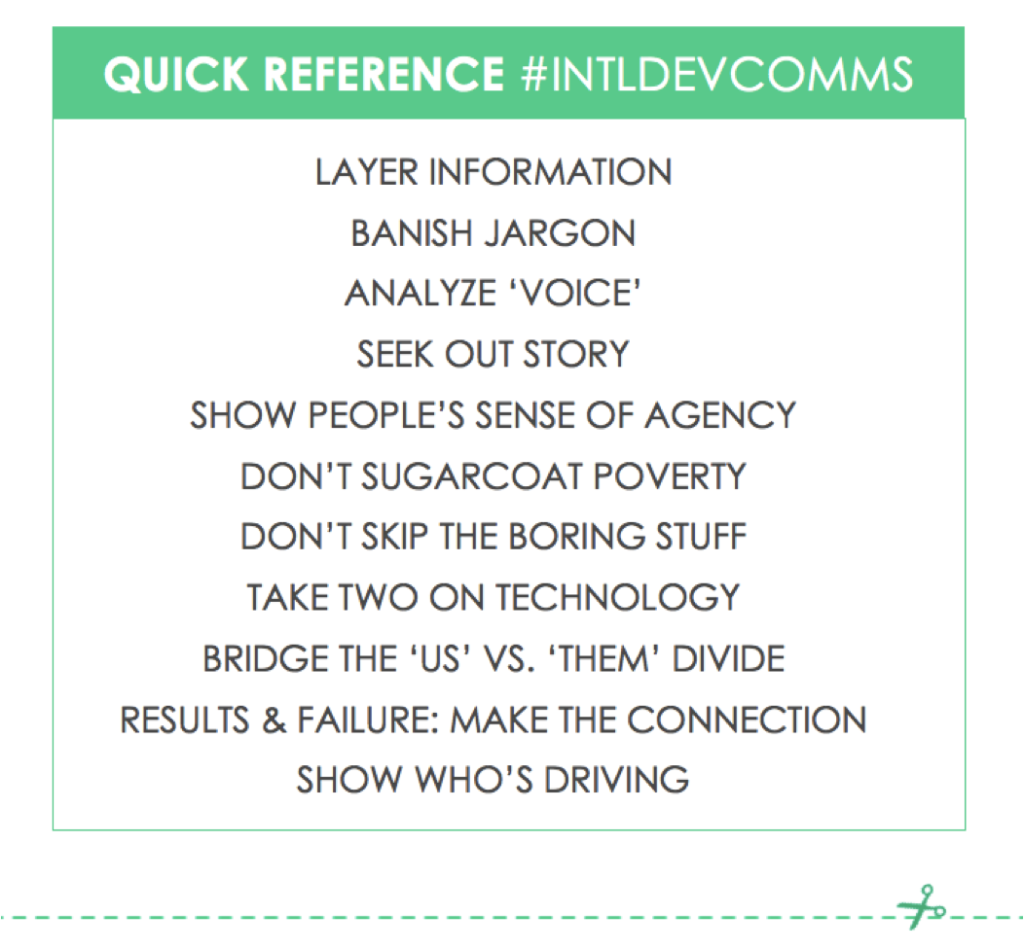A new generation of development and communications professionals is attempting to embrace nuance without turning the public off.
 But just in case you want to remain “old school” in your communications strategies and keep them grounded in a charitable fundraising model, here are 11 “somewhat tried,” “partially true,” and totally satirical approaches to communications for you to employ.
But just in case you want to remain “old school” in your communications strategies and keep them grounded in a charitable fundraising model, here are 11 “somewhat tried,” “partially true,” and totally satirical approaches to communications for you to employ.
These guidelines will help ensure that an international organization’s public face is totally at odds with its mission and work on the ground:
- OVERWHELM SUPPORTERS WITH INFORMATION, OR STAY TOTALLY SHALLOW. Context, detail, and depth is vital. On the other hand, you don’t want to burden busy people. Click.
- USE JARGON if you can help it. Bewildering your readers makes you sound smarter.
- BE A VOICE FOR THE “VOICELESS.” It’s always up to you to portray who poor people are and exactly what they need. Otherwise, how will wealthy people know how to help them?
- ALWAYS USE ACADEMIC-STYLE WRITING. What narrative format is best to influence, motivate and move the general public? Why pieces that use a thesis statement, supporting arguments, and APA-citations of course.
- SHOW PEOPLE’S DEPENDENCE on international aid organizations. Portray people as identity-less, helpless, incapable, and/or desperate. Stereotypes and generalizations are just shorthand.
- ROMANTICIZE POVERTY. Poverty can be upbeat and uplifting, don’t you know!?
- SKIP THE BORING STUFF. Who wants to think deeply about global poverty? Governments functioning properly? Yawn. Next Kardashian please.
- HYPE UP TECHNOLOGY. The newest app will solve poverty. It doesn’t matter if no one wants it.
- ACKOWLEDGE HOW DIFFERENT “WE” ARE FROM “THEM.” Pity, guilt and shame help keep a healthy distance between people in poor and rich countries. It’s catching after all…
- HIDE FAILURES LIKE A DIRTY FAMILY SECRET. Donors will pull funding immediately if you don’t have all the answers or if the slightest shortcoming is revealed.
- FEEDBACK, SCHMEEDBACK. Accountability is just about reporting to donors. Who would want a bad review from the people you’re actually attempting to support?
BONUS: Ignore criticisms and differing perspectives about your work. You deserve those self-congratulatory and self-righteous tendencies.
***
 Want some USEFUL approaches? Here you go!
Want some USEFUL approaches? Here you go!
For a way forward from these mockingly dreadful communications practices in the international development sector, read the publication, The Development Element: Guidelines for the future of communicating about the end of global poverty, written with my “International Development Communications” class at the Georgetown University Public Relations & Corporate Communications Master’s Program
Read the full publication here:
And join the conversation online using #IntlDevComms.
***
Related Posts
Do grassroots organizations in poor countries have an image problem?
Is the aid architecture crushing young aid workers?
“The Samaritans”: Why are some laughing? Some offended?

How about “actively hide the fact that there are other organizations doing similar work; just mentioning that there are other options might take away donations from your organization.”? 🙂
Pingback: A new vision for storytelling and development | Until the Lions
Pingback: Casting off the White Savior Complex | Until the Lions